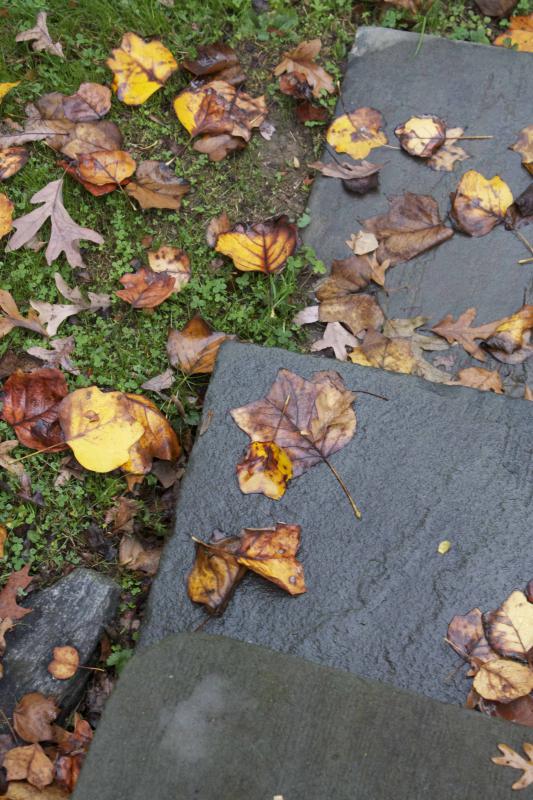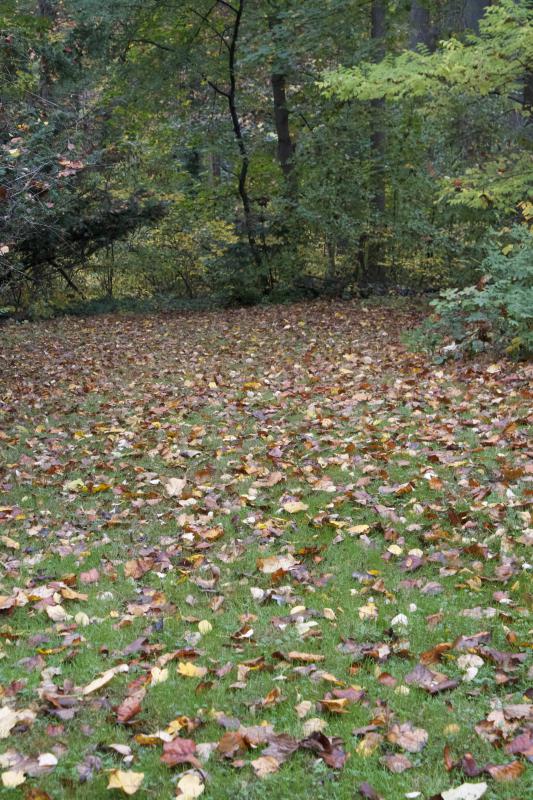Serendip is an independent site partnering with faculty at multiple colleges and universities around the world. Happy exploring!
Looking Down at the World
When Professor Crawford was telling us about how she always walks looking at the ground because she wanted to look at the rocks I thought about all the other things that one could look at on the ground as well. Maybe an ant here or a flower there, but these things do not necessarily carry the history behind Bryn Mawr as well as the rocks do. I feel that next time I am staring at the ground I am going to look at the rocks like Professor Crawford to see if I actually notice anything, maybe if the rocks are shiny or if they resemble wistihicken (spellcheck needed). I feel that since we spend all the time looking around us when we walk that we miss a lot of different aspects of nature that are on the ground. Professor Crawford's different aspect has made me realize the importance of all the things that we do not think to do, like looking at the rocks on the ground instead of the trees. Our different frame of references of nature allow us to better understand each aspect of the environment.

Change
Change is good. Society seems to be perpetually changing our politics and regulations to save itself from regression, or being left behind in a world that is constantly modernizing. Most of the time, our adaptations to the changing times are advantageous, and have rendered the United States one of the superpowers of the world. On the news, we brag about technological innovations, advancements in our education system, and refreshed activism in social issues that reflect the benefits of change, and our positive relationship with it. Therefore, today I decided to walk around and choose a new spot where I would journal for the remainder of the semester. Surprisingly, I found great difficulty locating a new spot. I wasn't afraid to step outside of my comfort zone; I even tried writing in the garden next to Haffner. However, nothing I tried felt "right". I missed the familiarity of my old spot next to the pond behind Rhodes, and I was frustrated at myself for it. I convinced myself that if I changed up my old routine, I would see the results in my writing. I found myself forcing a change that didn't need to happen at all. In the end, I returned to the pond, and tried writing again. Watching the pond in the rain allowed me to clear my head of all my frustration, and the writing soon flowed in after. I realized that, while change is good, you shouldn't force it--so for now, you can still find me at Rhodes every Sunday, writing behind the pond.

Hurricane Thoughts
So, obviously a lot of us are scrambling to prepare ourselves for the hurricane and adjusting our plans to fit its needs. I think this is relevant to our recent conversations and that unpacking this might be interesting.
I experienced this less when I lived in a tropical climate prone to hurricanes, but people around here are either extremely apprehensive or extremely excited about the idea of the hurricane hitting Bryn Mawr. Either way, we are reacting to something that we do not understand in very typical and very human ways. That is absolutely acceptable, but sometimes it looks like we are trying to comfort ourselves by turning the storms into something campy, familiar, and non-threatening, even though a lot of times they are a lot more damaging than the way they are portrayed. For instance, we give hurricanes names. This potentially dangerous and uncontrollable storm has been given the name "Sandy."
Naming hurricanes has always bothered me. Giving something a gendered name to familiarize us with something we don't understand and to potentially decrease the feeling of a threat is unsettling. Does a hurricane need a name? Does a hurricane need a gender? Weather forecasters refer to hurricanes as "she" or "he" depending on their given name, and I have previously seen yet-unnamed tropical storms or depressions referred to as "she" as a default (I'm not even sure what this implies).

Thursday's observations
Because of injury-related problems I experienced at the end of the week, I haven't been able to post my weekly observation yet. To avoid this in the future, I have decided to change my location. Other factors contributed to this decision, like the fact that the large green electrical box in my previous spot disrupts the feeling of being hidden and removed that first attracted me to the tree.
My new spot is conveniently next to Erdman, where I live. I'm not sure what it's known as, but it has a sign that says "Erdman Lookout" and it is a stone circle on top of a little hill. I will be sitting on the steps on the hill that face a lot of interesting plant life and, in the background, the wildflower garden.
Currently, this area is completely covered with what seems like orange leaves. The tree that these leaves used to belong to still has plenty of leaves of its own, but it's let go of a sea of leaves that now completely hide the grass underneath.
When I looked closer, I found that the leaves were not just orange, but a spectrum of yellow and orange and red and brown. I just perceived them to be orange.
This reminded me of art classes from when I was little, in which my teacher told me to look at a cloud and tell her all the colors I saw in it and I was not allowed to say "white."

Possible Ideas for Class Discussions
In terms of topics we could talk about in class for the rest of the semester I think we should try having conversations about how all the topics and readings might overlap with one another. A specific example of this would be Pollan’s article about weeds and Silent Spring’s talk of pesticide use. Both discuss a similar subject matter, plant life that is unwanted/undesired by humans, and the possible implications to dealing with them (ignoring them/letting them grow in specialized plots according to Pollan and drenching them in pesticide as Carson puts it). Seeing how both pieces address a similar topic, I think it would be useful to look at the overlap between Carson and Pollan and discuss/compare it with one another. From there class conversations could also look other similarities we can find among the other readings as well. It would also be nice to see how previous readings we have looked at might have some implications on the subject matters we are currently examining, as well as contemporary environmental and gender issues (since Silent Spring has started to make us talk about such issues in greater depth already). Revising the course to have more conversations like these would be helpful because it would let us put many of the readings in context with one another and also look at the much broader scope that each reading’s subject matter might hold on relevant issues.

Funding for Literacy
Image retrieved from: http://www.educationnews.org/technology/raygunreports-com-aims-to-save-students-money-on-textbooks/
In chapter two of Reading is my Window, Sweeney states: “In Ohio Prisons, the general libraries are funded entirely by revenue from each prison’s vending machines and commissary...” (57). The lack of funding for prison libraries is extremely outrageous, but what is even more outrageous is how much of the funding, going into prison programs that help alleviate recidivism. is “entirely” dependent on the prisoners themselves who have little to no resources and/or opportunities to earn wages. How can we expect prison libraries to have good reading material, or any at all, if the monetary resources are not available?

Legalizing weed
Great article about the marijuana legalization initiative on the ballot in Washington, and the racialized nature of drug arrests/incarceration.
Seeing Mosaics
The changed leaves covered the gorund and it looked like a mosaic. The individual leaves themselves were like small mosaics. It was hard for my eyes to take it all in. It was suppriging to see how much the back yard of the English had changed since I was there last. It is similar to a growing changing preson, but more repeative I guess. When the wind blew the leaves let go of their branches and sky dived to the ground (brave leaves), only to be crushed back into the earth under my feet -- eventually re-entering the tree in a different form. The sky was grey. The ai felt nice, and it smelled nice also. I was surprised at how upset I was when found that the ferns were brown and droopy and dead.


Another thought on randomness ~
It is amazing how the use of rocks dates back to the origin of human history and is still applied nowadays. In history I have learnt about the many durable evidences of tools and buildings made of rocks and stones. It is not surprising that such an abundant, indigenous, long-lasting and useful material is still used in this time, especially with human expanding knowledge that can be applied to use specific type of rock for specific purpose of construction. However, what struck me is amount of work that makes a stone building and its beauty. In order to build up the castle-like Rhoads where I am, people had to excavate an area to form a quarry, rocks were then delivered to the construction site from the quarry and then cut and grinded to become perfect rectangular blocks that can be stacked into straight walls. Laying rocks is also an art as each pattern has its own characteristic. It create individuality for the building itself.
I used to think of nature as layers of randomness. Without the interference of human, trees grow up wherever conditions allow, weeds cover the area… But is randomness a pattern? If one lays rocks of different shapes on a wall or in a unexpected and undersigned pattern, the wall might turn out not ugly at all. Indeed, many buildings nowadays apply this as a “random pattern”. And if language can be used to place an order onto the natural environment, then yes, randomness can be a pattern.



